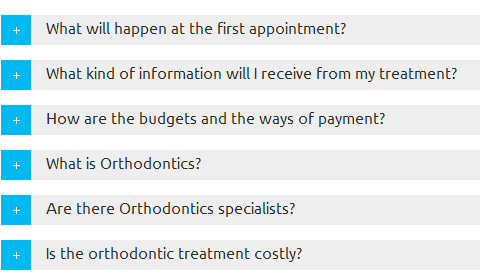Orthognathic surgery corrects skeletal malocclusions. A skeletal malocclusion is caused by the incorrect position of teeth and its osseous bases, either maxillary or jaw, in relation to the rest of the face. As the facial skeleton moves, it may cause important facial changes. Thus, we try to male skeletal movements related to the most aesthetic facial changes. All the orthognathic surgery is done inside your mouth, so that there are not any external scars.
These combined treatments are undertaken when an orthodontic treatment itself cannot place the teeth in the correct position in relation to the dental arch, or this position is very forced and unstable. It is also advisable to practice orthognathic surgery when there is a very deficient masticatory function or the face is disproportionate (too long, too short, hollow face or prominent jaw). All these cases need a combined treatment of orthodontics and orthognathic surgery.
The orthognathic surgery has got two aims: a perfect masticatory function with well aligned and level teeth, and from the aesthetic point of view, a facial harmony with a well-proportioned face. Temporomandibular joint problems, such as osteoarthritis or meniscus dislocation, are easier to appear if we masticate with a bad position of the jaw. The orthognathic treatment slows down the deterioration of the joint and makes it work in a better position by protecting the joint health.
The incorrect position of the teeth also helps developing gum problems, such as gingival recession and periodontal disease. In this case, the orthognathic treatment improves the gingival health.
The bad position of the teeth makes some teeth hold more masticatory force than the others. This is a biomechanically unfavourable situation, which cause a premature loss of the most damaged teeth. In this case, the orthognathic treatment protects the teeth.
The most suitable dental and skeletal movements for every patient will be assessed through a very detailed facial and occlusal analysis. We carry out a computer simulation about the future results after the treatment. Patients have got all the necessary information.
The initial planning is jointly carried out by the maxillofacial surgeon and the orthodontist based on some facial and dental analysis, X-rays (orthopantomography and teleradiography), models of dental arches and other specific tests on every case.
The orthodontic treatment before surgery usually lasts between 6 and 10 months. During this time you will visit your surgeon (every 3 months) to see the evolution of your dental movements. When the orthodontic initial phase is finished, the surgeon gathers all the necessary information (facial measurements, photos of teeth and face, and dental models) for the simulation of movements in laboratory models and the surgical splint will be then created. This simulation will reproduce these movements in the operating room. Three weeks after the operation had finished, you will keep consulting the orthodontist for the final movements. This orthodontic post-operative period usually takes between 3 and 6 months. When you finish this period, the brackets will be removed and all the treatment will be finished….
Orthognathic surgery
Maxillary orthognathic surgery



